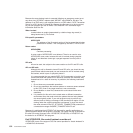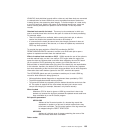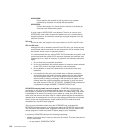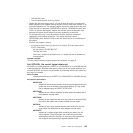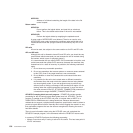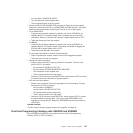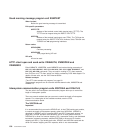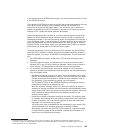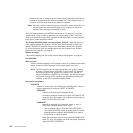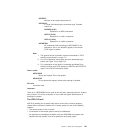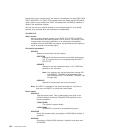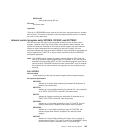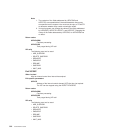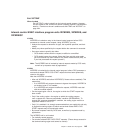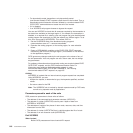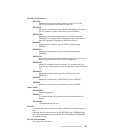v Examine the type of request and the resource being accessed (which can be
discovered by examining the request parameter list). The program could, for
example, reject file read requests but queue file updates.
Note: Because a failure of the exit program could affect system availability, it is
recommended that you make the logic of your program as simple as
possible, thus reducing the possibility of errors.
There are some problems that XISCONA cannot solve. For example, if you have
specified both a large number of sessions and a large value for MXT, CICS may
develop the short-on-storage (SOS) condition before XISCONA is invoked because
there are no further sessions available.
The sample XISCONA global user exit program, DFHXIS: Note that there is a
CICS-supplied sample exit program, DFHXIS, that shows one way of limiting the
queue of ALLOCATE requests, based on the information passed to the program.
For more information about the sample global user exit programs, see “Sample
global user exit programs” on page 15.
Related concepts
“The function-shipping and DPL queue control sample exit program” on page 20
Exit XISCONA:
When invoked
When a function shipping or DPL request is about to be queued because all
bound contention winner sessions to the remote region are in use.
Note: For DPL requests that are routed dynamically, the dynamic routing
program is invoked before XISCONA. If there are no free sessions
the routing program may choose not to queue a DPL request; in
these circumstances, XISCONA is not invoked. For information about
the dynamic routing of DPL requests, see Dynamically routing DPL
requests, in the CICS Intercommunication Guide.
Exit-specific parameters
UEPISPCA
Address of a parameter list containing the following fields. You can
map the parameter list using the DSECT DFHXISDS.
UEPCONST
Address of the Connection statistics record.
Connection statistics records are of type STICONSR (STID
value 52). Your exit program can map the record using the
DSECT DFHA14DS. See notes.
UEPMODST
Address of the Mode Entry statistics record, or zero. A
Mode Entry statistics record is built only if:
v The connection-type is LU6.2 (see field UEPCONTY).
v The profile DFHCICSF (which is always used for function
shipping) defines a specific MODENAME to be used in
the allocation of LU6.2 sessions.
Mode Entry statistics records are of type STICONMR (STID
value 76). Your exit program can map the record (if present)
using the DSECT DFHA20DS.
140 Customization Guide



